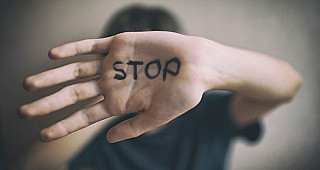Identifying and Supporting Victims of Domestic Abuse
What is domestic abuse?
The Home Office 2021 definition of domestic violence and abuse now states:
Behaviour of a person (“A”) towards another person (“B”) is “domestic abuse” if A and B are each aged 16 or over and are personally connected* to each other, and the behaviour is abusive.
Behaviour is “abusive” if it consists of any of the following:
- physical or sexual abuse
- violent or threatening behaviour
- controlling or coercive behaviour
- economic abuse
- psychological, emotional or other abuse
It does not matter whether the behaviour consists of a single incident or a course of conduct.
*Personally connected definition: They are, or have been, married; civil partners; have agreed to marry one another; have entered into a civil partnership agreement; are or have been in an intimate personal relationship; they have or have had a parental relationship in relation to the same child; or are relatives.
Controlling behaviour is: a range of acts designed to make a person subordinate and/or dependent by isolating them from sources of support, exploiting their resources and capacities for personal gain, depriving them of the means needed for independence, resistance and escape and regulating their everyday behaviour.
Coercive behaviour is: an act or a pattern of acts of assault, threats, humiliation and intimidation or other abuse that is used to harm, punish, or frighten their victim.
Identifying the signs of domestic abuse?
 If you are a professional working with individuals or families, it is important to be aware of the signs of domestic abuse. Domestic abuse can take many forms, and it is not always physical.
If you are a professional working with individuals or families, it is important to be aware of the signs of domestic abuse. Domestic abuse can take many forms, and it is not always physical.
Here are some tips to help you identify the signs of domestic abuse:
Look for physical signs: Bruises, cuts, broken bones or other physical injuries could be signs of physical abuse. However, it is important to remember that not all victims of domestic abuse will have visible physical injuries.
Pay attention to changes in behaviour: Victims of domestic abuse may become withdrawn, anxious, or depressed. They may also be hesitant to talk about their home life.
Look for controlling behaviour: Domestic abuse is about power and control. Look for signs that one partner or relative is controlling the other, such as monitoring their phone calls or limiting their access to money.
Listen for verbal cues: Verbal abuse can be just as damaging as physical abuse. Listen for insults, put-downs, and threats from one partner/relative to another.
Isolation: If the person becomes more isolated from their friends and family, this could be a sign that their partner or relative is trying to control their access to others.
Financial control: If their partner or relative is controlling their access to money or other resources, this could be a sign of abuse.
Trust your instincts: If you suspect that someone is being abused, trust your instincts and speak up. Your intervention could be lifesaving.
If you suspect that someone is experiencing domestic abuse, it's important to approach the subject sensitively and offer support. Let them know that they're not alone and that there are services available to help them. Encourage them to seek help, but don't pressure them into taking action before they're ready.
Asking about domestic abuse
The first step in making sure a victim of domestic abuse receives the right help and support is to ask about their experiences in their relationships and recognise the signs of possible abuse.
If you are concerned that they may be experiencing domestic abuse, offer to talk privately with them somewhere that they feel safe.
Ask sensitive questions that help the person talk about their experiences. Listen carefully and avoid making assumptions. Exercise "professional curiosity."
If the person needs support to communicate, including an interpreter, use a professional who is impartial and has a duty to maintain confidentiality. Do not use family and friends.
Responding to a domestic abuse disclosure
Validate
If a person discloses domestic violence or abuse, their safety and the safety of others, including any children who may be affected, is the first priority.
Validate what's happening to the person by letting them know that they are not alone and that you believe them. Let them know that they are not to blame for what is happening and that they do not deserve to be treated in this way. Also, inform them that there is help available.
Assess and safety plan
Check the victim's safety, including whether the abuser is present, the whereabouts of any children, immediate concerns, and whether the victim has a safe place to go.
Consider if there is an immediate risk and seek management support and call the police if there is.
Check if the victim needs any medical attention and support them to access help and support if needed.
Discuss safety planning with the victim and help them to formulate a safety plan. Click here for safety planning guidelines
Explore options – Click here for help and support available for survivors.
If the victim needs access to refuge accommodation, contact EDAN Lincs Refuge at 01522 510041, or if outside of these hours, contact the National Domestic Abuse helpline at 0808 2000 247.
Specialist services
Share information about specialist services and offer a referral to a domestic abuse service. If the person resides in Lincolnshire offer a referral to LDASS.
If the person appears to have additional needs associated with alcohol or drug misuse or mental health problems, offer to refer them to the relevant service, as well as to domestic abuse support.
Record your discussion and the actions you have agreed.
Further resource
Click here - A guide for people who think their friend, relative, neighbour or colleague may be in an abusive relationship (Developed by Dr Alison Gregory in partnership with Bristol City Council and Avon and Somerset Police and Crime Commissioner ) via safe lives website (www.safelives.org.uk).

